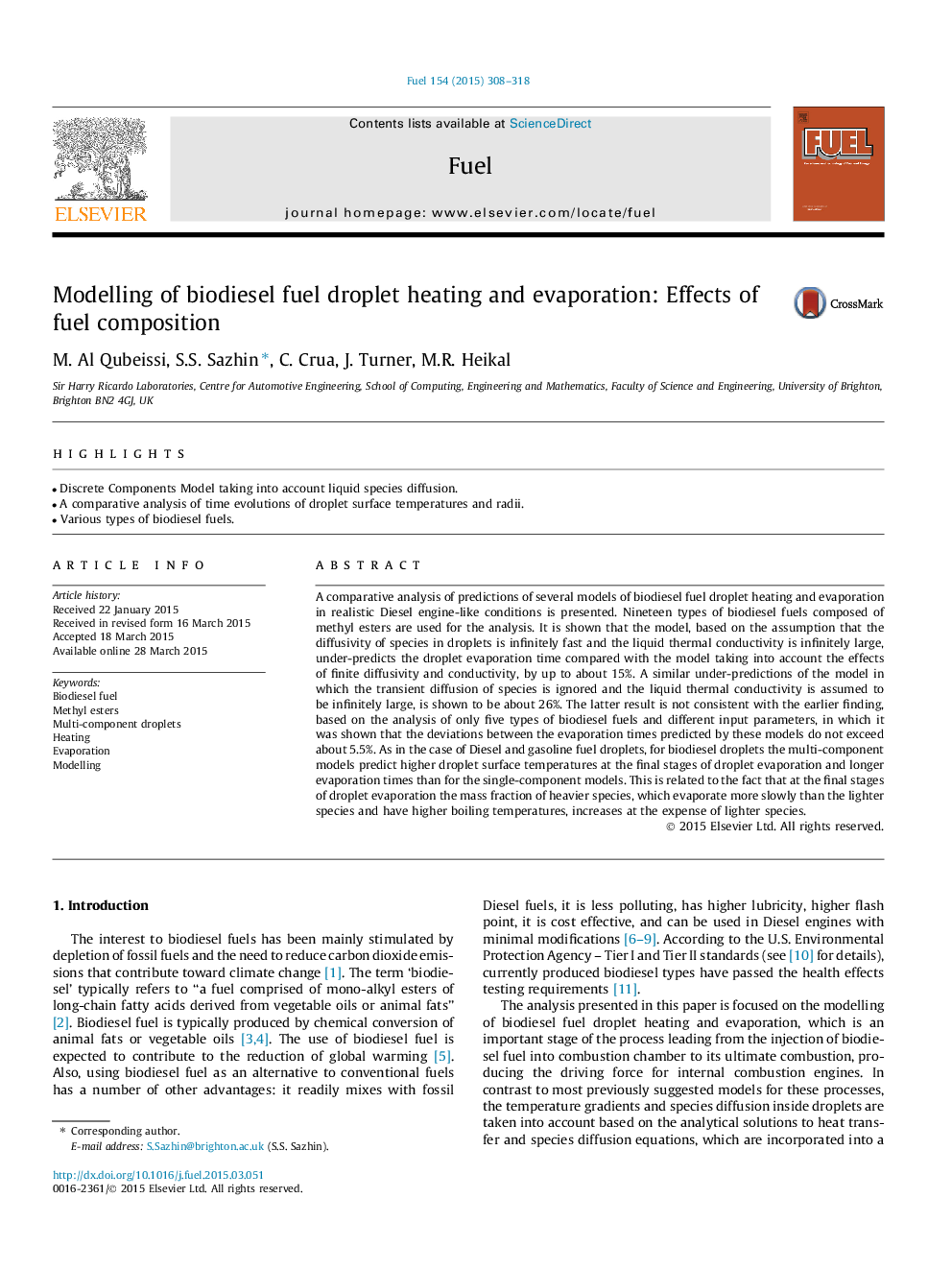| Article ID | Journal | Published Year | Pages | File Type |
|---|---|---|---|---|
| 6635508 | Fuel | 2015 | 11 Pages |
Abstract
A comparative analysis of predictions of several models of biodiesel fuel droplet heating and evaporation in realistic Diesel engine-like conditions is presented. Nineteen types of biodiesel fuels composed of methyl esters are used for the analysis. It is shown that the model, based on the assumption that the diffusivity of species in droplets is infinitely fast and the liquid thermal conductivity is infinitely large, under-predicts the droplet evaporation time compared with the model taking into account the effects of finite diffusivity and conductivity, by up to about 15%. A similar under-predictions of the model in which the transient diffusion of species is ignored and the liquid thermal conductivity is assumed to be infinitely large, is shown to be about 26%. The latter result is not consistent with the earlier finding, based on the analysis of only five types of biodiesel fuels and different input parameters, in which it was shown that the deviations between the evaporation times predicted by these models do not exceed about 5.5%. As in the case of Diesel and gasoline fuel droplets, for biodiesel droplets the multi-component models predict higher droplet surface temperatures at the final stages of droplet evaporation and longer evaporation times than for the single-component models. This is related to the fact that at the final stages of droplet evaporation the mass fraction of heavier species, which evaporate more slowly than the lighter species and have higher boiling temperatures, increases at the expense of lighter species.
Related Topics
Physical Sciences and Engineering
Chemical Engineering
Chemical Engineering (General)
Authors
M. Al Qubeissi, S.S. Sazhin, C. Crua, J. Turner, M.R. Heikal,
